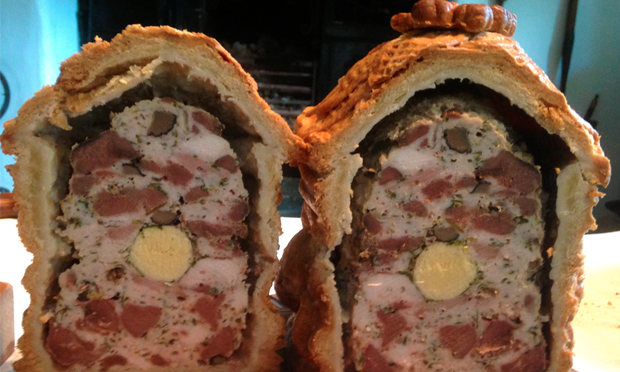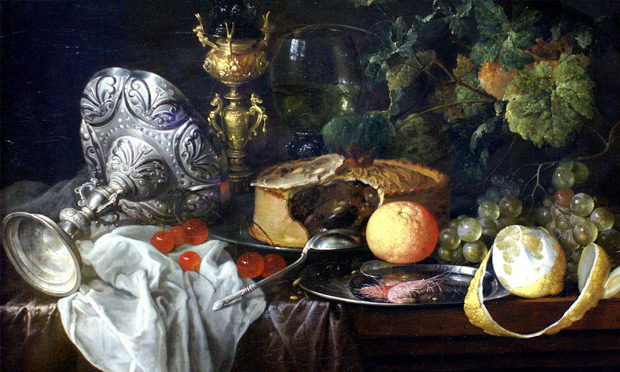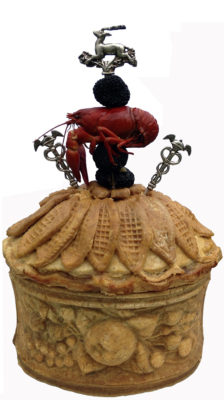Beauty is in the pies of the beholder

The fragrant history of mince pies wafts us cheerfully through January and the dull cold days ahead.
Over the festive season they don’t get the appreciation they deserve, eclipsed by the heavyweight charms of traditional turkey, Christmas pudding, and too much of everything else, but now in the gloom and murk of January these little morsels make a nice light lunch, with a lump of cheese and some crisp celery.
The spices and sugar enhance the tartness of fruit and the crisp buttery pastry, and take us right back to the Middle Ages when sugar and spices were hugely expensive and used medicinally as well as for pleasure. Another ancient ingredient of the mince pie filling is suet, which seems weird, but is a reminder of the days when we made no distinction between sweet and savoury dishes, and happily put meat along with fruit and nuts and spices into our pies. That’s why we call the pots of stuff we fill our pies with ‘mince meat’. Yes, it’s meat!
The English cook Robert May published in his book The Accomplisht Cook of 1685 a quantity of recipes for pies of various kinds, including his chewitts or minced pies. Cooked beef or veal was cooled then chopped and mixed with minced suet, prunes, dates, currants, and spiced with nutmeg, cinnamon, ginger, candied fruit, perfumed with verjuice and rosewater, salted, and used to fill the little pies. You don’t taste the meat and fat, they just give a lovely unctuousness, while the verjuice, sour grape juice, cuts the sweetness of the fruit.
‘Gothic Revival’
It was a joy to hear on Radio 4 on Christmas morning the top food historian Ivan Day, force feeding Edward Stourton with a highly spiced sludge, described as “liquid Christmas pudding”. Ivan reminds us that by the 17th century spices were used in pies by those who could afford them in a sort of gastronomic Gothic Revival, a nostalgia for the tasty food of the medieval Catholic aristocracy, compared with the austerity of the Puritan regime. Ivan’s blog Food History Jottings gives more details (and some amazing images of pies made by him in his Cumbrian farmhouse kitchen).

There are wonderful 17th century Dutch still life paintings (see above) of luxury objects in which a rather grand pie, with its lid decorated with baroque pastry curlicues is shown broken open to reveal the sumptuous filling of meat, dried fruit, pine nuts, slices of candied orange and heaven knows what, all bathed in a luscious gravy. Contemporary recipes list what the eye cannot see: mushrooms, artichoke hearts, asparagus, bone marrow and truffles, not to mention sweetbreads, cocks’ combs and lambs’ stones (testicles).
Going Dutch
These pies are not cut in neat slices as we do today, but hacked open to get at the filling, eating the crust was optional. You could compare a rather plain pie with its decorative frilled top to a modest Dutch housewife in her demure dark dress with its lace collar, giving no hint of the voluptuous charms they conceal, well hidden in Protestant Holland, but flaunting themselves blatantly in the more relaxed atmosphere of Rubens’s Antwerp where the star of Velvet Brueghel’s ‘Sense of Taste’ is a cheerful, lightly clad, maiden attacking a dish of aphrodisiac oysters, alongside a massive peacock pie, with the bird itself deployed as decoration, its tail splayed out at one side, and iridescent silvery green neck and head protruding from the crust at the other. A carefully preserved bird could be recycled indefinitely this way.
But the pie was not only a receptacle for a mixture of tasty ingredients, it was a utilitarian and hygienic way of preparing and preserving perishable food. Once enclosed and cooked in a thick pastry crust, the ingredients would be sterilised, bad bugs killed off, and nasty bacteria unable to get in. You could send a haunch of venison from Yorkshire to a friend in Hackney, several days’ journey, cooked in a thick crust of coarse flour and water, and it would arrive in fine condition, whereas a lump of raw meat would not have been in such good nick.
Tedious moralists could make much of how the contents of a pie, once exposed to the air, deteriorate and perish, as would a vulnerable young woman exposed to the corrupt influences of the outside world.
So the symbolism of a pie in a still life reinforces the message of so many Dutch interiors, where women are portrayed in tranquil scenes of well-ordered domesticity, kept firmly indoors, dusting and polishing, and rearing biddable daughters, gratefully subservient while their menfolk toil away in the wider world. Ugh.
The artist Jan Steen had a subversive take on this: his dysfunctional family scene ‘The Effects of Intemperance’ shows a mum more than a bit the worse for wear, her silk dress about to collide with her pipe, dad having it off with the au pair in the background, and the children feeding a cat with what must have once been a fine pie, whose role here is to show how wicked waste and wanton behaviour are the result of poor parenting. Social workers in the Netherlands today still use the expression ‘a Jan Steen family’ and you can see why.
Poor man’s pastry
But you did not have to be rich and posh to enjoy the virtues of a pie. The poor man’s pasty was a hand-held version to carry to work, perhaps a frugal mixture of meat and vegetables enclosed in pastry, from time immemorial a neat convenience food, not the invention of some Cornish genius, but a universal response to the possibilities of enclosing a tasty filling in pastry or dough, then baking or frying or boiling it. There are 
Bits of bone, sinews, gristle, organs and extremities, recovered from slaughterhouses or chicken factories, all go into the mix, not harmful in themselves, but as vehicles for some less than healthy additives, salt, sugar, fat, synthetic flavour enhancers, and lots of water, to name but a few. Joanna Blythman writes with a calm rage of her scrupulous researches into all this in her book Swallow This: Serving up the Food Industry’s Darkest Secrets. Meanwhile Hackney citizens can cautiously digest the designer pies on offer in various establishments or better still go to a good butcher, buy some additive-free ingredients, and construct your own.
